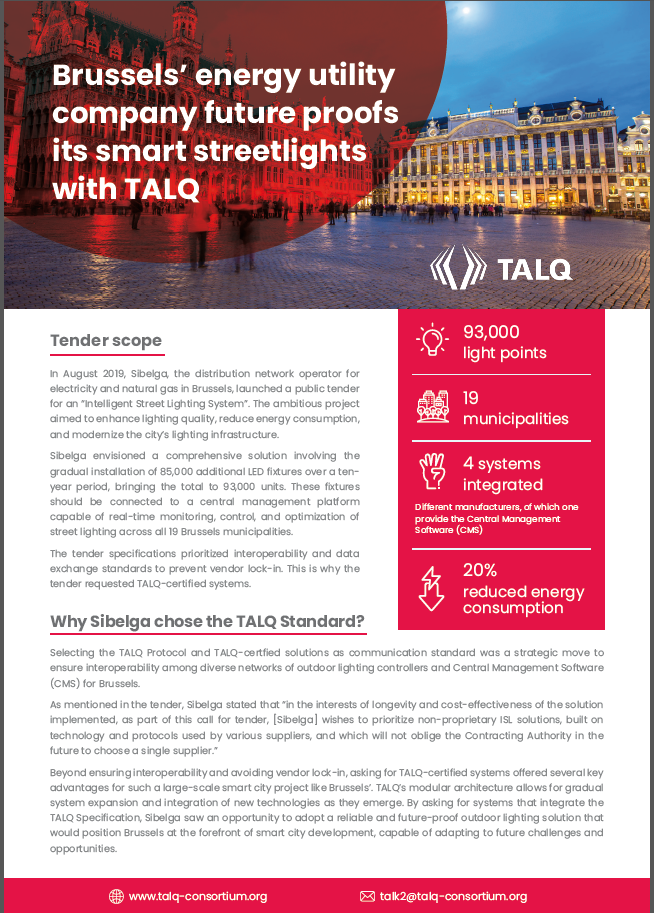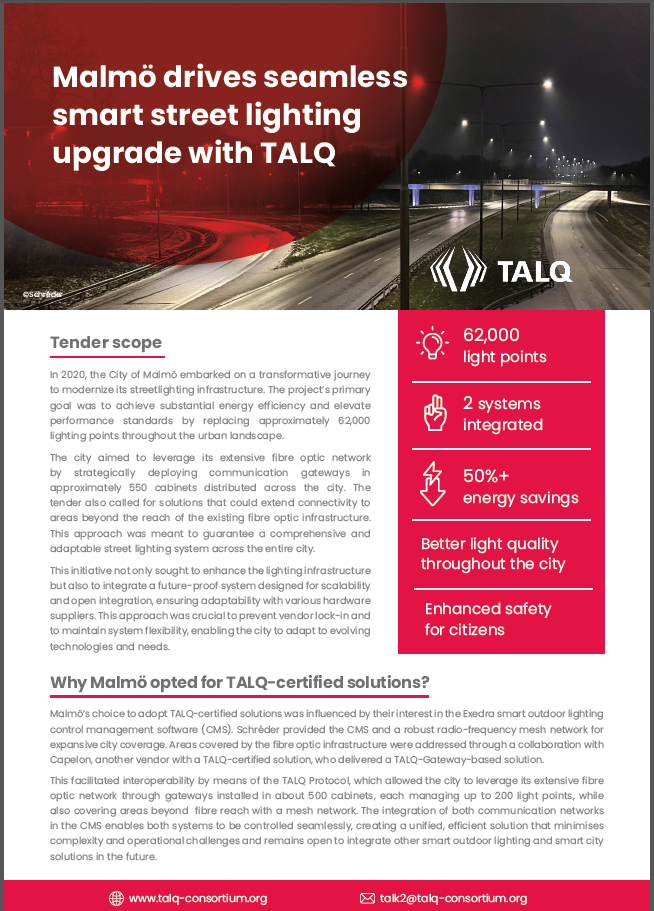Use Cases Street Lighting
Showcase of Smart Outdoor Lighting
Each project is specific and requires special attention and study. The purpose of the use case below is to explain the generic benefits of smart outdoor lighting control systems.
Scope of our virtual project
- Number and nature of existing luminaires: 15,000 light points, with a mix of 100 Watts Ceramic Metal Halide, 150 Watts High Pressure Sodium and 250 Watts High Pressure Sodium lamps, all equipped with conventional magnetic ballasts.
- Total yearly energy consumption without a streetlight control system: 10,000,000 kWh
- Price of energy: 15 cents of USD per kWh
- Annual budget for street lighting: 2,6 Mio USD of which 1,5 Mio USD energy and 1,1 Mio USD maintenance (lamp replacement, night patrols, onsite visits, retrofit old luminaires and other).
Summary description of the proposed Streetlight Control Solution
- Retrofit most luminaires to LED more efficient luminaires controlled with an individual Light Point Controller.
- Install the infrastructure to deploy the streetlight control network (access points, gateways and/or segment controllers)
- Use a central management system to control the streetlight network, automatically identify the failures, deploy lamp switching and dimming regimes according to the lighting standards and category of roads. For instance:
- Luminaires in residential areas could be dimmed down to 75 % between 10 p.m. and midnight and 40 % between midnight and 5 a.m.
- Luminaires on main roads could be dimmed based on the measured traffic.
- Luminaires on public parks could be dimmed down to 30 % except when motion is detected which would increase light levels to 80 % for instance.
Measured benefits
- Savings due to LED retrofit: depending on configurations of the street and selected LED products, savings would be up to 4,000,000 kWh
- Savings due to streetlight control system (fixed time dimming, dynamic dimming, switching control, constant light output): depending on configurations of the street and selected LED products, savings would be up to 3,000,000 kWh
- 2,100 tons of CO2 saved
- Reduced number of incoming calls from citizen thanks to faster response time from maintenance teams
- Increased safety in the street thanks to more issues identified before a major problem occurs
- No need for night patrols


